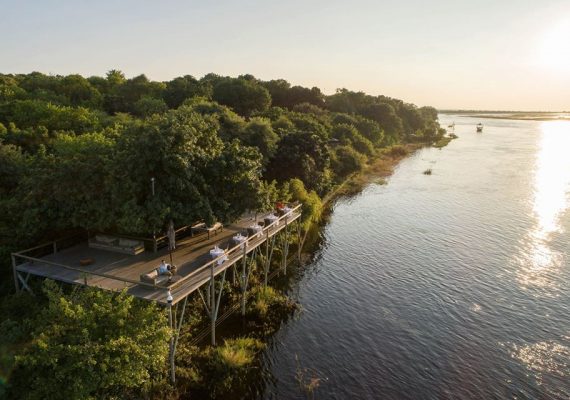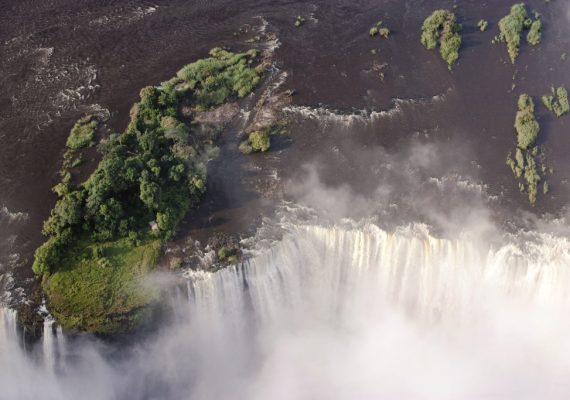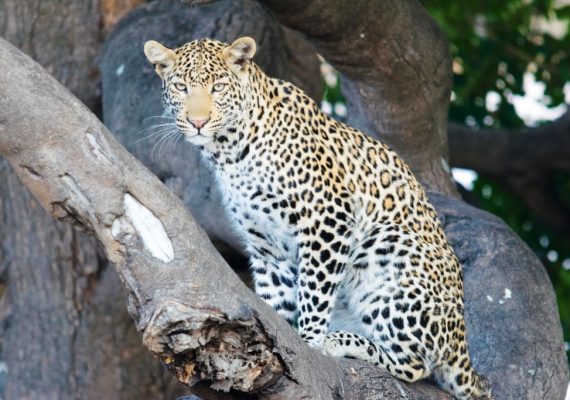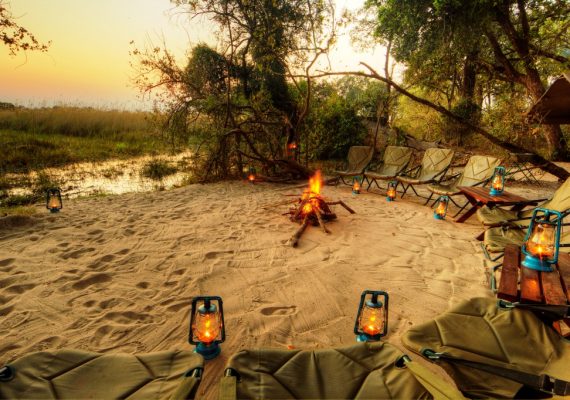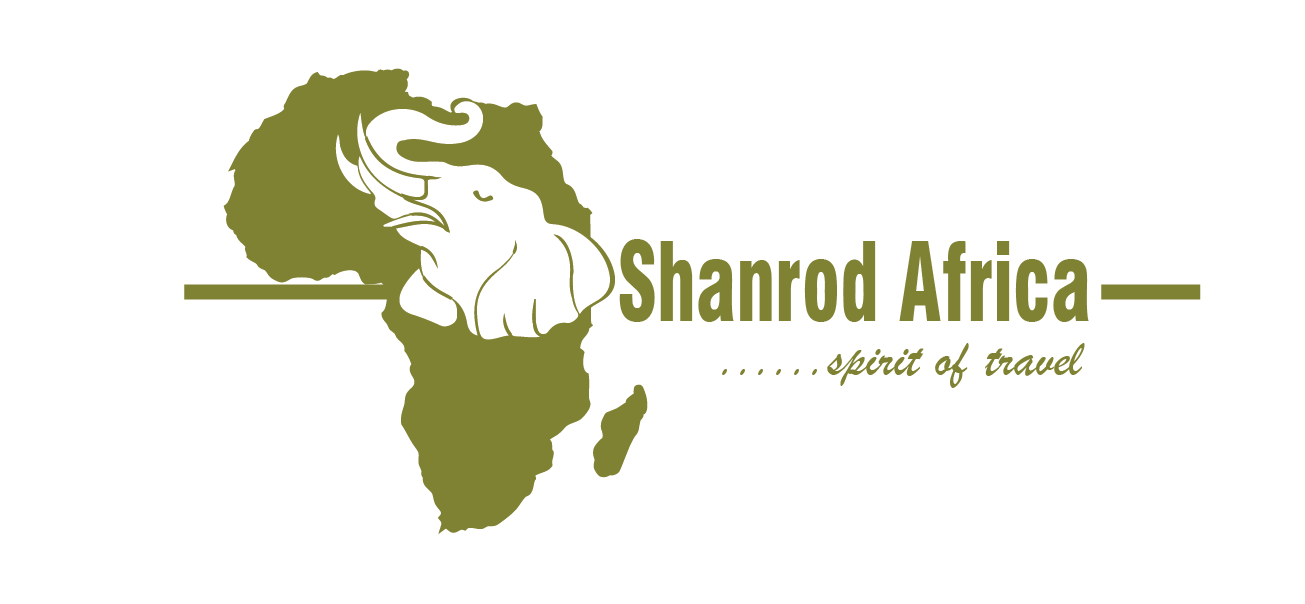For nature and wildlife lovers, Mokolodi is the closest excursion from Gaborone that offers a wide variety of activities for the entire family. Situated approximately 10 kilometres south of Game City, on the main Lobatse Road, the five-square kilometre reserve is comprised of riverine terrain interspersed with rocky hills, with the very picturesque Lake Gwithian and adjoining picnic site.
Mokolodi offers game drives, guided walks, horse-back safari, rhino tracking, giraffe tracking, walks with trained elephants, and cheetah visits. It holds regularly scheduled lectures, as well as annual events, such as Easter and Christmas day excursions for children, and the Mokolodi Photography Competition.
Wildlife resident in the reserve include kudu, warthog, duiker, giraffe, steenbok, zebra, blue wildebeest, gemsbok, ostrich, impala, springbok, waterbuck, baboons, vervet monkeys, mountain reedbuck, eland, bushbuck and leopard. A highly successful white rhino reintroduction and breeding programme now puts the white rhino population in the reserve at eight.
Mokolodi also houses a reptile park, and a wildlife sanctuary for disabled or orphaned animals that for one reason or another cannot be returned to the wild, and an animal clinic that treats sick or injured animals.
Facilities include camping sites, chalets, picnic sites, an education centre, museum and library, the World’s View Conference and Function Centre, The Alexander McCall Smith Traditional Rest Camp, as well as a lovely stone and thatch restaurant that gives a beautiful view of the surrounding bush.
Environmental education for Botswana children is a major mandate of the nature reserve; and each year thousands of schoolchildren come for courses, sleeping in the dormitories, or on camp outs.
LION PARK RESORT
Approximately five kilometres further south of Mokolodi, the recently opened Lion Park Resort, situated at the former Lion Park, adds a new dimension to fun family outings. Here kids can let loose on water slides, the valley of the waves, swimming pools and other water features, as well as a variety of rides. Great for those sizzling summer days.
OTSE
Flanked by the Otse Mountains, including the country’s highest – Otse Peak (1,491m) – the picturesque village of Otse has a number of attractions, not the least of which are the many wonderful climbing and hiking options in the area. The most prominent hill is Baratani Hill, on the west side of the road, about 40 kilometres from Gaborone’s Game City. Called the ‘Lovers’ Hill,’ (‘Lentswe la Baratani’), it carries a legend about two young lovers who were refused permission to marry. Despondent, they both flung themselves off the cliff to their deaths. The hill is regarded as sacred; and historically Batswana would neither climb the hill, nor point to it.
Just after Baratani Hill, still on the main road, and before the turnoff to the village, are a cheese factory (locally made) and adjoining café, and Botlhale Jwa Phala, a paper factory that produces invitation cards, photo albums, bags, book-markers and fuel briquettes from discarded paper.
Broken bits of tiles are used to make photo and mirror frames, lampshades and furniture decoration. Browsing is encouraged, and purchases can be made directly from the factory.
Turning left at the Otse signpost, and driving through the village, one crosses a pretty river valley where cattle and goats are usually grazing.
The Mannyelanong Game Reserve is visible from here, and provides a dramatic backdrop to the landscape. The reserve was established in 1985 on Balete Tribal Land for the protection of the Cape vultures that nest at its south end. The four-square kilometre area encompasses a single, red sandstone hill. Visitors can climb the hill, but the south end is fenced, and cannot be entered, to prevent disturbance to the vultures at their nesting sites. Entrance to the reserve is through the Department of Wildlife and National Parks offices in Otse, and is free.
The Cape Vulture is an endangered species and fully protected under the laws of Botswana. Cape vultures have nested in Mannyelanong for hundreds of years, but in the last 30 years or so their numbers have diminished considerably. With human expansion, the vultures’ food has become scarcer, with the result that chicks suffer from calcium deficiency due to lack of bone in their diet. Since the establishment of the reserve, vulture populations there have stabilised.
LOBATSE
The entrance (from the Gaborone road) to this pleasant town set amongst hills and stands of tall trees is a shady, tree-lined avenue. One passes the country’s High Court, as well as the Botswana Meat Commission (BMC), one of Africa’s largest abbatoirs and meat-processing operations.
Lobatse, approximately 70 kms south of Gaborone, is the last stop for cattle farmers trekking their livestock hundreds of kilometres through Kalahari sands for sale to the BMC. Cattle farming is the country’s third largest revenue earner, and its high quality, free-roaming beef is primarily exported to the United Kingdom and the European Union. Tours to the BMC can be arranged.
The first major tribal settlement in the area was a Bangwaketse village, built in the late 18th century. Later, because of conflict with neighbouring groups, they moved west to their present capital, Kanye. A construction camp and railwaycsiding were built in 1896, the lattercservicing Cecil Rhodes’ railway linecthat ran north to Southern Rhodesia. The original railway station no longercstands, but Botswana Railways still runs through the town, then passing through Gaborone, and towns further north, before reaching Francistown.
There are several interesting archaeological remains to be seen around Lobatse. Some are on private land and require permission to visit. These include stone walling from the Ngwaketse village, situated on Lobatse Estates, and the earlier Seoke stone wall settlement built by the Bangwaketse around 1770. Just outside the town, on the main Mafikeng road, there are rock paintings of wildebeest – though now quite faded, probably painted by Khoe herders, and possibly dating between 1000 to 1700AD.
KANYE
One of the most scenic routes in southern Botswana is the Gaborone to Kanye drive (approximately 80 kms southwest of Gaborone). The road gently climbs and descends, giving entrance to gently rolling grasslands rich in trees and shrubs, quaint vistas of agricultural lands and grazing livestock, and tiny villages nestled between rock-strewn hills.
Home of the Bangwaketse people who settled in the area in the mid 19th century, Kanye is the longest continuously occupied capital village in Botswana.
There are a number of interesting places to see in Kanye, so plan on a full day excursion from Gaborone, or a night-over at one of its lodges or guest houses.
The Polokwe Viewpoint, situated about ten kilometres north of Kanye on the Thamaga road, gives a breathtaking view of the northern valley, particularly at sunrise and sunset. From the Gorge, near Seepapitso Secondary School, interesting, and very beautiful, walks can be taken – lush in vegetation, with good birding possibilities. Stone wall settlements are also visible along the way. According to oral history, the Gorge is the place where the Bangwaketse hid from Mzilikazi’s Ndebele raids in the area. Just north of the village and near the dam lies a bird sanctuary.
Kanye’s main kgotla (village meeting place and customary court) is full of interesting historical buildings, including the former residence of Kgosi (Chief) Bathoen I, the original tribal offices, built in 1914 by Seepapitso III, and nearby, the former residence of the late Kgosi Bathoen II. As well, there are several old churches to explore, the oldest being the London Missionary Church, built in 1894. The proper courtesy is to first go to the kgotla offices and inform officials that you wish to visit the kgotla, at which point you will be warmly welcomed, and shown around.
The delightful Motse Lodge houses a cultural centre, where traditional arts and crafts are being revitalised, and a museum, which holds artifacts from the area.
JWANENG
Fittingly named, the Jwaneng Diamond Mine – the richest diamond mine in the world – is situated in south-central Botswana, on the fringes of the Kgalagadi, approximately 80 kms west of Kanye. Jwaneng means ‘a place of small stones.’ Owned and operated by Debswana, a partnership between the diamond mining magnate DeBeers and the Botswana Government, Jwaneng has been in operation since 1982, and has consistently contributed a large share of Botswana’s total ore output. In 2007, the mine produced approximately 13.5 million carats from 10.3 million tonnes of ore. The mine’s accompanying township (population, 15,000) is an open one, and tourists can drive through the township and make use of its facilities, such as petrol stations, restaurants or guest houses.
The mine has established and supports the nearby Jwana Game Park, which is home to a number of indigenous wildlife species, excluding the large predators. There is, however, a Cheetah Conservation Botswana field unit in the park. And in 2007, two white rhinos were introduced into the park from the Khama Rhino Sanctuary.
Members of the public are welcome to visit the game park, and tours of the diamond mine can be booked.
Popular Botswana Safaris

10 Days, 9 Nights Start From $
10 Days Classic Guided Mobile Botswana Safari, Northern Highlights
Book Now